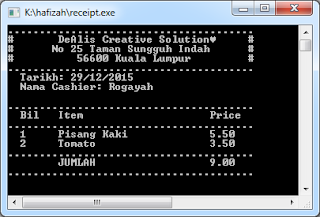
Basic Shot Types
What is basic shots? Basic shots refer to in terms relative to the subject. For example, a "close up" has to be a close up of something. A close up of a person could also be described as a wide shot of a face, or a very wide shot of nose. So, there're many techniques like:
- Extreme Wide Shot - Show the subjects surroundings.
- Very Wide Shot - Much closer to the subject than an extreme wide shot.
- Wide Shot - Subject takes up the full frame. Let say, our subject is "a girl standing in front of a country house".
- Medium Shot - Show some part of the subject in more detail, whilst still showing enough for the audience to feel as if they were looking at the whole subject. Contohnya pic budak pompoan tadi, so mid shot ni dari pinggang ke kepala budak tu la...
- Medium Close Up - Half way between a mid shot and a close up. Mean that, dari dada ke kepala.
- Close Up - a certain feature or part of the subject takes up most of the frame. A close up of a person usually means a close up of their face.
- Extreme Close Up - Show extreme details. It is too close show general reactions or emotion except in very dramatic scenes.
- Cutaway - Shot that's usually of something other than the current action. Example : our object is lecturer, then cutaway technique will focus to object and then to the audience. In this chase, focus to the students.
- Cut In - Like cutaway, but specifically refers to showing some part of the subject in detail. For example, hand movement...
- Two shot - the basic idea is to have a comfortable shot of two people. The important thing is, two shots are good for establishing a relationship between subjects.
- Over the Shoulder Shot - looking from behind a person at the subject, cutting off the frame just behind the ear.
Miss Fiza ;)





No comments:
Post a Comment